Conservation
Antarctica is the world’s last great wilderness, a place of outstanding natural beauty. Its plant and animal life are fragile and unique. For all these reasons, Antarctica is a place worth protecting.
Warm up
In the past, animal life on and around Antarctica was hunted and fished without regulation. Rubbish was dumped or burnt on Antarctica or even put in the ocean. The protection of Antarctica was not a priority when compared to the conduct of science and scientific research.
We are now much more environmentally aware about how our actions can impact on the environment and the Antarctic Treaty has evolved to reflect this. Through the Madrid Protocol on Environmental Protection (Protocol, and entered into force in 1998), ,which designates Antarctica as an area dedicated to peace and science, Antarctica’s flora and fauna are protected, and fishing is increasingly regulated via CCAMLR. The indiscriminate dumping of waste is a thing of the past and scientists have strict rules under the Protocol, which sets out basic principles and mandatory rules to human activities in Antarctica to, for example, minimise waste, prevent pollution and clean up the earlier waste disposal. It also stipulates that all parties commit themselves to carrying out environmental impact assessments for all new activities such as the establishment of a new research station.
Certain parts of the continent are judged to be so special that they have been given even greater protection. There are a variety of protected and managed areas:
-
Antarctic Specially Protected Areas (ASPAs)
-
Antarctic Specially Managed Areas (ASMAs)
-
Historic Sites and Monuments (HSMs)
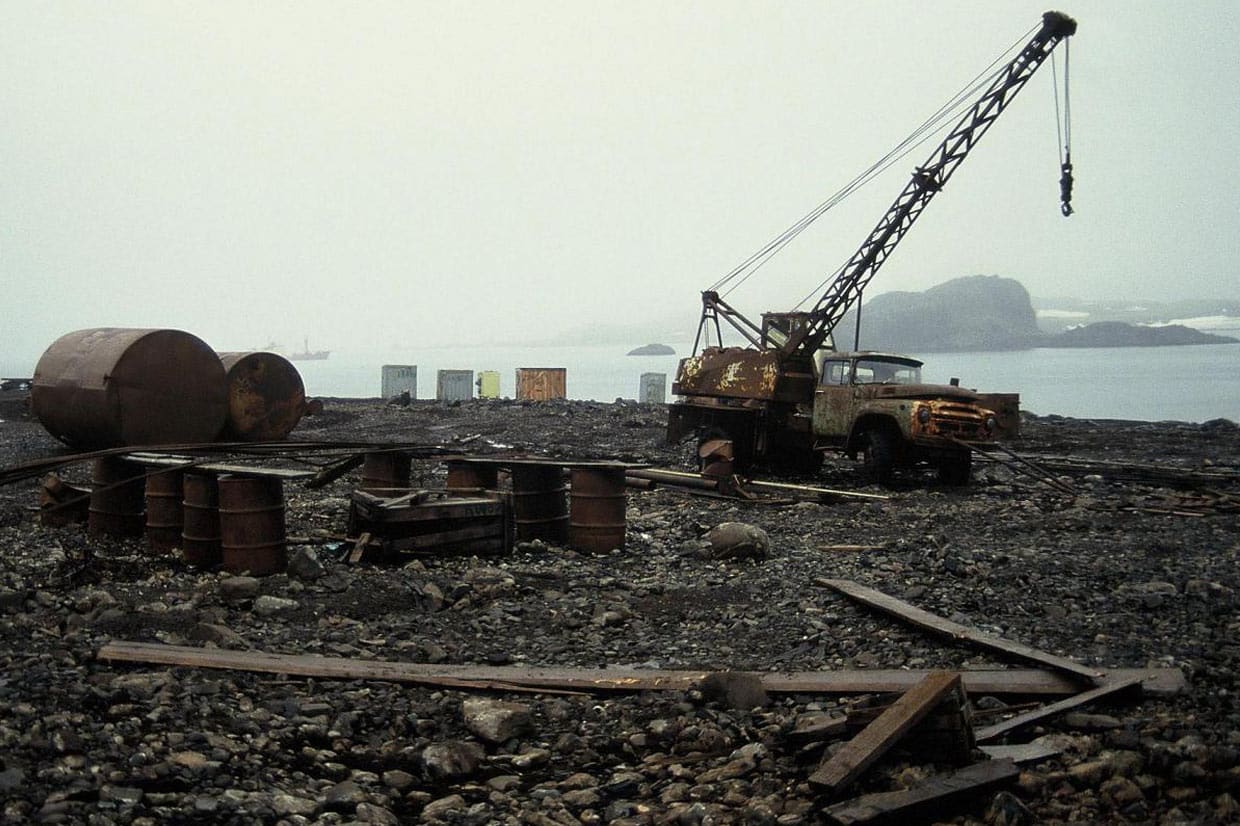
Find out more about the Environmental protocol and the specially protected areas and other agreements protecting flora and fauna in Antarctica.
There are a huge range of animals and birds that live in and around Antarctica that are endangered or vulnerable. Some of these are listed by the International Union for Conservation of Nature (IUCN).
Find out more about them:
Q&A
What do you notice about the list of species that are threatened?
Most of the animals on the chart are sea birds. The conservation status of seabirds, and albatrosses in particular, is declining at a faster rate globally than any other species group of birds. Did you notice how many on the list were albatrosses?
This list is some years old and some of the species are now recovering for example the fur seal, why do you think this is?
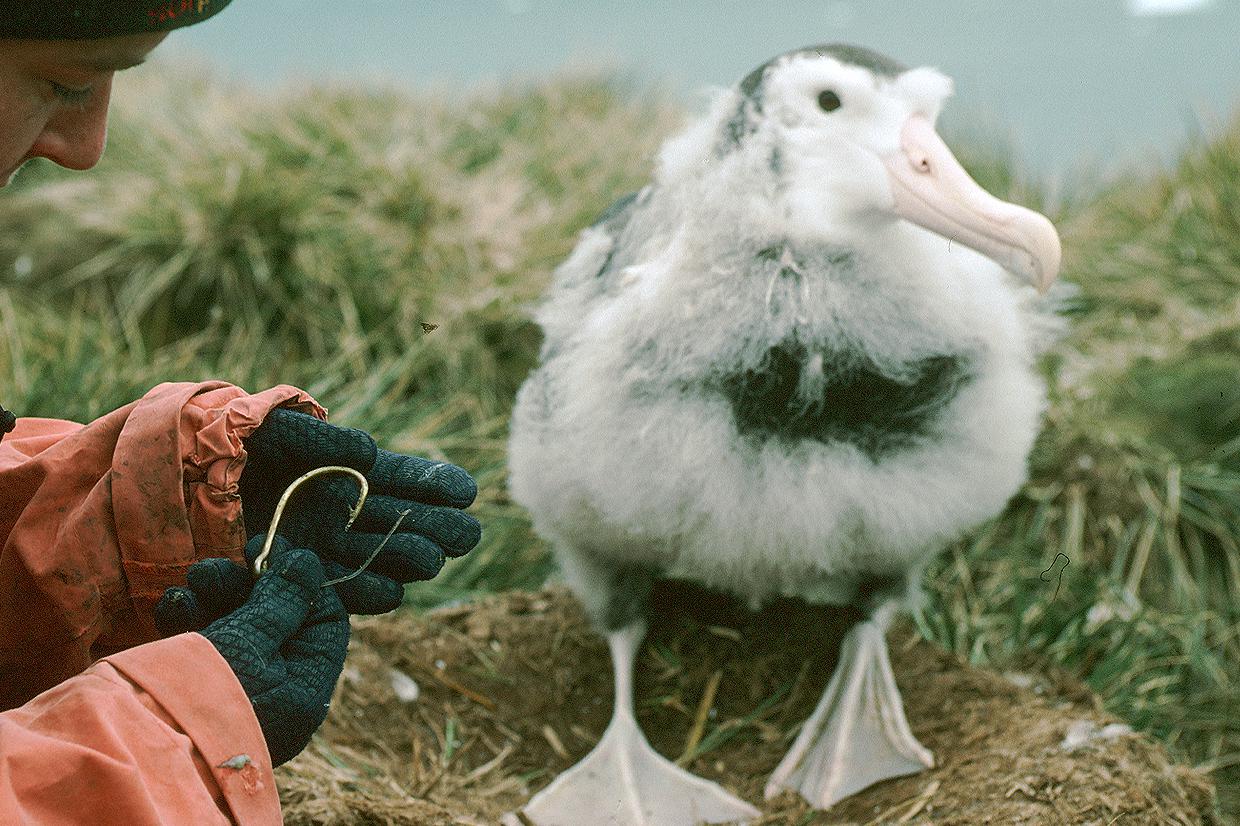
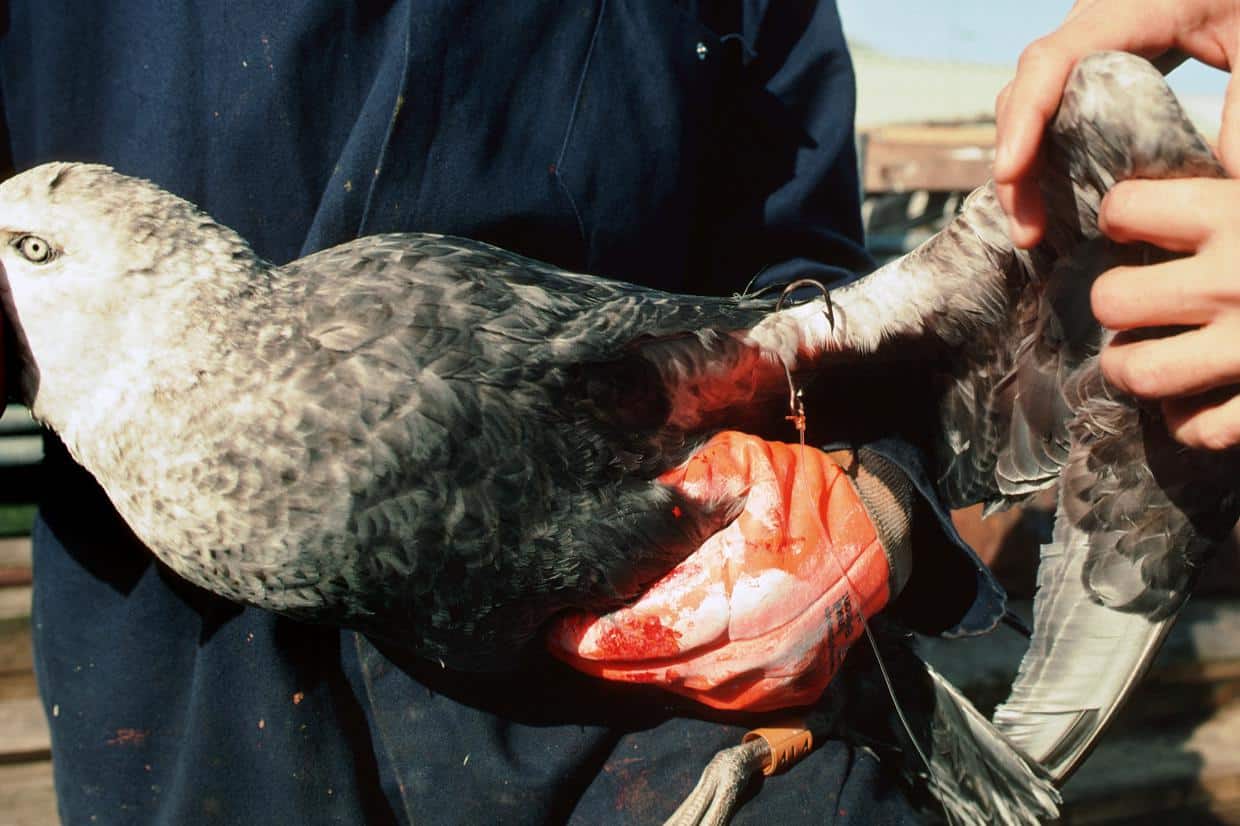
Cold facts
Case study: The Wandering Albatross
The Wandering Albatross is an interesting case study of conservation in action. Although Bird Island, South Georgia is not covered by the Antarctic Treaty the Wandering Albatross is an important part of the Antarctic ecosystem.
Albatross Factfile:
-
There are 22 species of albatross currently recognised
-
The wandering albatross is the largest sea bird
-
It has a wingspan of more than 3 metres, longer than any other living bird
-
All albatrosses and their relatives (petrels), species lay a single egg
-
Nine of the 22 species of albatross only breed every second year
-
Wandering albatrosses take 10 years to reach sexual maturity
-
They can live up to 60 years
-
They have one of the lowest reproductive rates of any bird
-
Forage for food over thousands of square kilometres
-
They can travel 1000 kilometres in a single day!
-
A wandering albatross can fly round the Antarctic twice in the year between breeding attempts.
Read more about the albatross:
What is the status of albatrosses?
There are 22 species of albatross and their status varies for different species from near threatened to critically endangered.
The wandering albatross is currently listed as vulnerable by the IUCN. The wandering albatross population at South Georgia is declining (as shown in the graph below), which includes data from the main breeding site at Bird Island. The main threat is considered to be incidental mortality in longline fisheries. Compared with other albatrosses that breed in South Georgia, the wandering albatross is particularly at risk because adults fly huge distances north from the colonies into subtropical waters, where there are extensive tuna fisheries. The parties to CCAMLR have been active in seeking to reduce seabird mortality via fishing activity in the Southern Ocean.
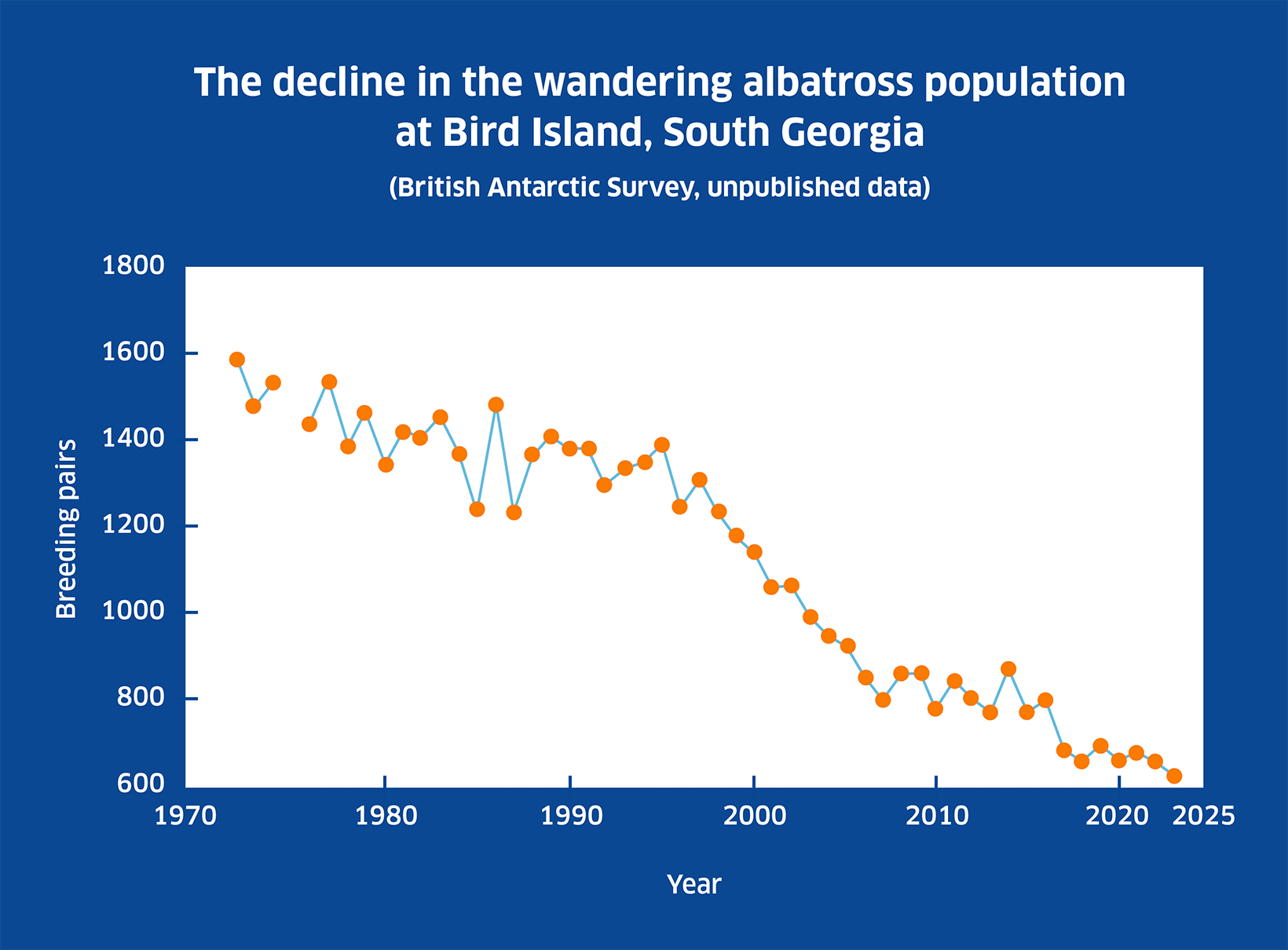
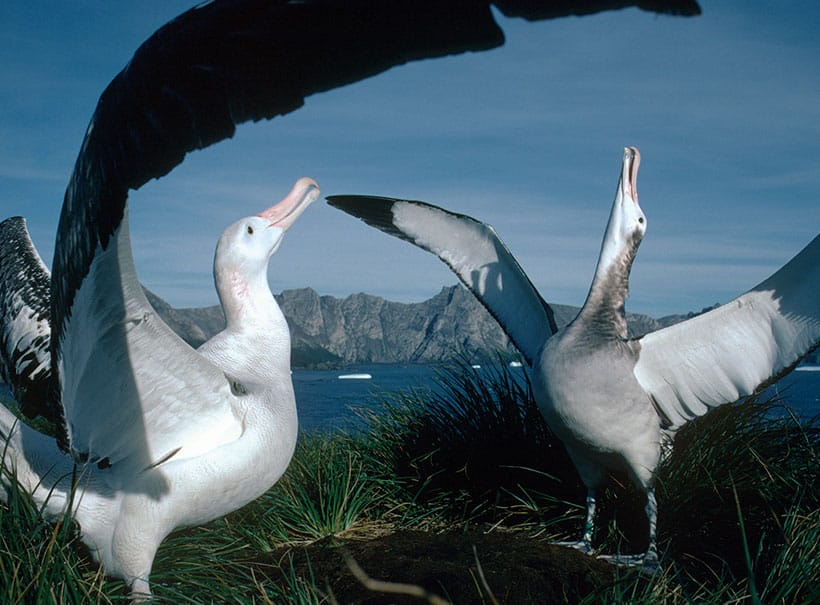
Decline in the population
In South Georgia, the population as a whole declined by 1.8% per annum between 1984 and 2004. The table below shows the change in population of breeding pairs in 1984 and 2004 in South Georgia. Although South Georgia is not part of Antarctica and is not covered by the Treaty it is covered by CCAMLR and is subject to Conservation Measures.
Estimates of the number of pairs of wandering albatross breeding in a single season at South Georgia in 1984, 2004 and 2014.
| Location | 1984 | 2004 | 2014 |
| (1) Proud Island | 8 | 6 | 3 |
| (2) Bird Island | 1366 | 948 | 772 |
| (3) Cape Alexandra | 57 | 40 | 35 |
| (4) Coal Harbour | 19 | 16 | 18 |
| (5) Frida Hole | 9 | 6 | 3 |
| (6) Chaplin Head | 3 | 0 | 0 |
| (7) Weddell Point | 47 | 10 | 10 |
| (8) Kade Point | 41 | 23 | 10 |
| (9) Saddle Island | 53 | 40 | 32 |
| (10) Cape Demidov isthmus | 3 | 2 | 1 |
| (11) Bomford Peninsula | 24 | 15 | |
| (12) Samuel Island | 8 | 1 | |
| (13) Cape Rosa | 13 | 4 | 4 |
| (14) Nunez Peninsula | 0 | 3 | 1 |
| (15) Annenkov Island | 264 | 193 | 159 |
| (16) Diaz Cove North | 0 | 0 | 0 |
| (17) Kupriyanov Island Outer | 8 | 5 | 9 |
| (18) Kupriyanov Island Inner | 2 | 0 | |
| (19) Ranvik | 2 | 0 | 0 |
| (20) Trolhul | 9 | 3 | 2 |
| (21) Inner Lee | 9 | 9 | 15 |
| (22) Outer Lee | 28 | 9 | 3 |
| (23) Skua Island | 0 | 0 | 0 |
| (24) Prion Island | 60 | 43 | 37 |
| (25) Petrel Island | 0 | 1 | 0 |
| (26) Invisible Island | 2 | 1 | 1 |
| (27) Mollyhawk Island | 6 | 3 | 1 |
| (28) Crescent Island | 9 | 15 | 11 |
| (29) Albatross Island | 171 | 155 | 139 |
| (30) Nameless Point | 9 | 2 | 0 |
| Total South Georgia | 2230 | 1553 | 1278 |
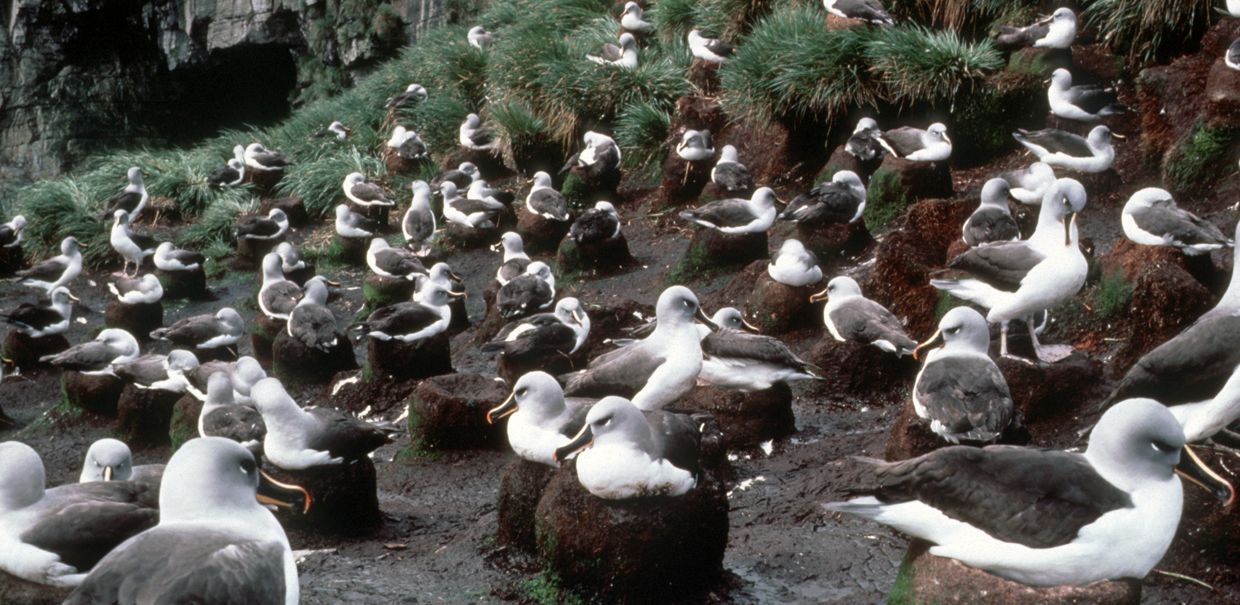
Why are albatrosses threatened?
Longline fishing is used by the fishing industry to catch larger fish such as tuna, swordfish and hake. The lines can be 60 miles long with secondary lines branching off. This can result in thousands of baited hooks. The albatross (as well as other birds and marine life) eat the bait but get entangled in the longlines and are dragged into the water and drown.
Seabirds also collide with trawler net cables and break their wings falling to their death. Some types of cable (net-sonde) are not allowed to be used in the CCAMR Convention area (ACA). Birds are also attracted to boats as crew throw the discarded fish offal into the sea. This is also prohibited in the Convention area.
Introduced mice on Gough Island have impacted on numbers of Tristan albatross (formerly considered a subspecies of Wandering Albatross) as mice eat eggs and attack and kill chicks.
NB Gough Island is not covered by the Antarctic Treaty, but it does come under the jurisdiction of CCAMLR and therefore the Conservation Measures
This might interest you:
What is being done to halt the decline of albatrosses?
Scientists at the British Antarctic Survey have monitored albatross populations since the 1960s on Bird Island in South Georgia. By using satellite tracking in the early 1990s scientists could learn about their foraging routes and just how much time they spend following commercial fishing boats.
The International Agreement on the Conservation of Albatrosses and Petrels came into force in 2004. Countries who have signed up to the treaty agree to work together to improve conservation status. This includes enhancing research and monitoring, reducing incidental mortality rates, eradicating non-native species at breeding sites and reducing habitat loss and pollution.
Methods of Conservation
Streamer lines
Streamer lines are ropes with brightly coloured plastic streamers attached. They can be used singly or in pairs and are deployed off the back of the fishing vessel so that the streamers flap in the area where the longline enters the water. This creates a visual “fence” preventing birds from interfering with the baited hooks until they have sunk out of reach.
Weighting lines
This method involves the attachment of heavy weights that pull the fishing lines down deeper into the water quickly. Although this method can reduce deaths of albatrosses, smaller seabirds such as petrels and shearwaters can dive more deeply to retrieve fish so they still get caught on the hooks.
Night fishing
By fishing at night, less albatross may be caught on the lines as they normally forage in the daytime. However other threatened species (including white chinned petrels which are related to the albatrosses) are still at risk as they forage during both daylight and darkness.
Keeping offal on board
Research by the British Antarctic Survey has shown that albatrosses spend a large amount of time following fishing vessels which increases their likelihood of being caught in the long lines. One reason for this is a free dinner provided by fishermen who throw the bycatch (non-target fish) and remains of processed fish (offal) overboard. By keeping the bycatch and the offal on board, albatrosses may be less likely to follow boats and therefore less likely to get caught in the line hooks.
Agreement and cooperation from the fishing industry is very important if these methods outlined above are to work. The fishing industry looses an estimated £10 million a year because of loss of bait to albatrosses and other seabirds. Stopping illegal fishing is also a priority as it is unlikely that pirate vessels will use any methods that reduce the numbers of birds ort other species (eg turtles) that are hooked and drowned. Illegal fishing remains a major managerial challenge to CCAMLR.
Find out more about methods of conservation:
RSPB Saving Seabirds Globally
ACAP: Eradication Guidelines
Agreements
There are other international agreements that help to protect the albatross including:
-
Convention for the Conservation Antarctic Marine Living Resources
-
FAO International Plan of Action for Reducing Incidental Catch of Sea birds in Long line fisheries
-
Agreement on the Conservation of Albatross and Petrels
-
Antarctic Treaty
Student activities
Activity 1: characteristics
-
The wandering albatross is threatened in Antarctica mainly due to human impacts. Look back at the albatross fact file, and determine which three characteristics of the birds make long term survival of the species even more challenging? Explain your answer.
Activity 2: conservation map
-
Give reasons why a map would be useful in the conservation and management of the Southern Ocean. What do you think should be displayed on the map?
Activity 3: population trends
-
Look back at the graph of wandering albatross population trend and the table of wandering albatross breeding pairs at South Georgia. Comment on the trends.
Activity 4: methods of conservation
-
In your opinion, which methods of conservation are more is likely to reverse the decline in albatross numbers? Explain your answer.
Activity 5: challenges
-
The conservation methods outlined above to help protect the albatrosses, could improve the chances of the bird’s survival. What do you think are the biggest challenges in ensuring these methods work?
Activity 6: campaigning
Imagine you work for a leading conservation group and are very concerned about the number of albatrosses which die each year in fisheries. The conservation group have decided to launch a campaign to ensure that the fishing industry employs methods to reduce the “bycatch” of albatross.
Write a campaign letter to persuade fishermen to use methods that reduce by- catch of albatross.
Use the links to help you:





